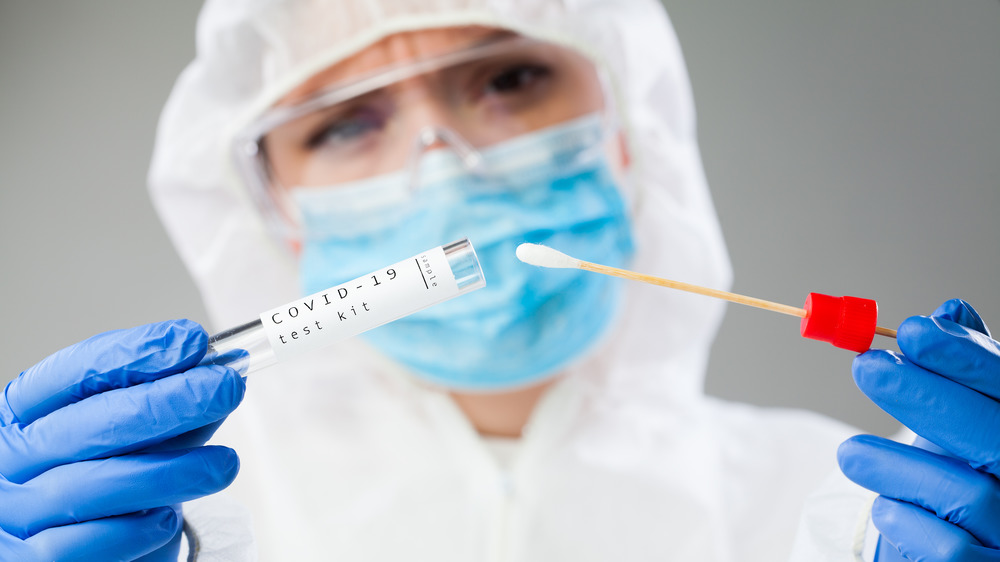Why Hilary Duff Probably Didn't Get An Eye Infection From COVID-19 Tests
You may have seen the news recently that actress and singer Hilary Duff started off 2021 in the emergency room with an eye infection. Luckily for the former Lizzie McGuire star, treating it with antibiotics was effective, and eventually, it went away completely (via Health). Duff believes that she most likely caught the infection from the frequent COVID-19 tests she and the other actors had to take on the set of her show Younger. But should you be worried about contracting an eye infection from a COVID-19 test?
One of the most common eye infections is conjunctivitis, also known as pink eye (via Cleveland Clinic). The U.S. sees up to 6 million cases of pink eye each year. Symptoms include redness, itchiness, discharge, and tearing in one or both eyes. The infection can be caused by bacteria, allergies, and even viruses — including the virus that causes COVID-19. It's spread by touching eyes with dirty hands, using dirty towels, sharing towels and washcloths, and sharing eye makeup and personal care items (via Mayo Clinic).
The connection between eye infections and COVID-19
So could you get an eye infection from a COVID-19 test? The likelihood of this happening is very low. That's because COVID-19 tests are most commonly done with sterile swabs used to collect mucus from the nasal cavity. The nasal cavity is separated from the eye by bone and tissue, so there would not be an exchange of fluids between the two except from the tear duct to the nasal cavity. However, the swab goes up the nose and in theory, it never touches the eye.
While pink eye can in fact be a symptom of COVID-19, it's not one of the more common symptoms that people experience. And if COVID-19 test swabs were causing pink eye, there would be many more people complaining of infections after being tested. Doctors are simply not seeing that scenario play out. If you think you may have been exposed to COVID-19, get tested. And if you think you have pink eye, seek treatment. Either way, practicing good hand hygiene can help prevent both infections.


